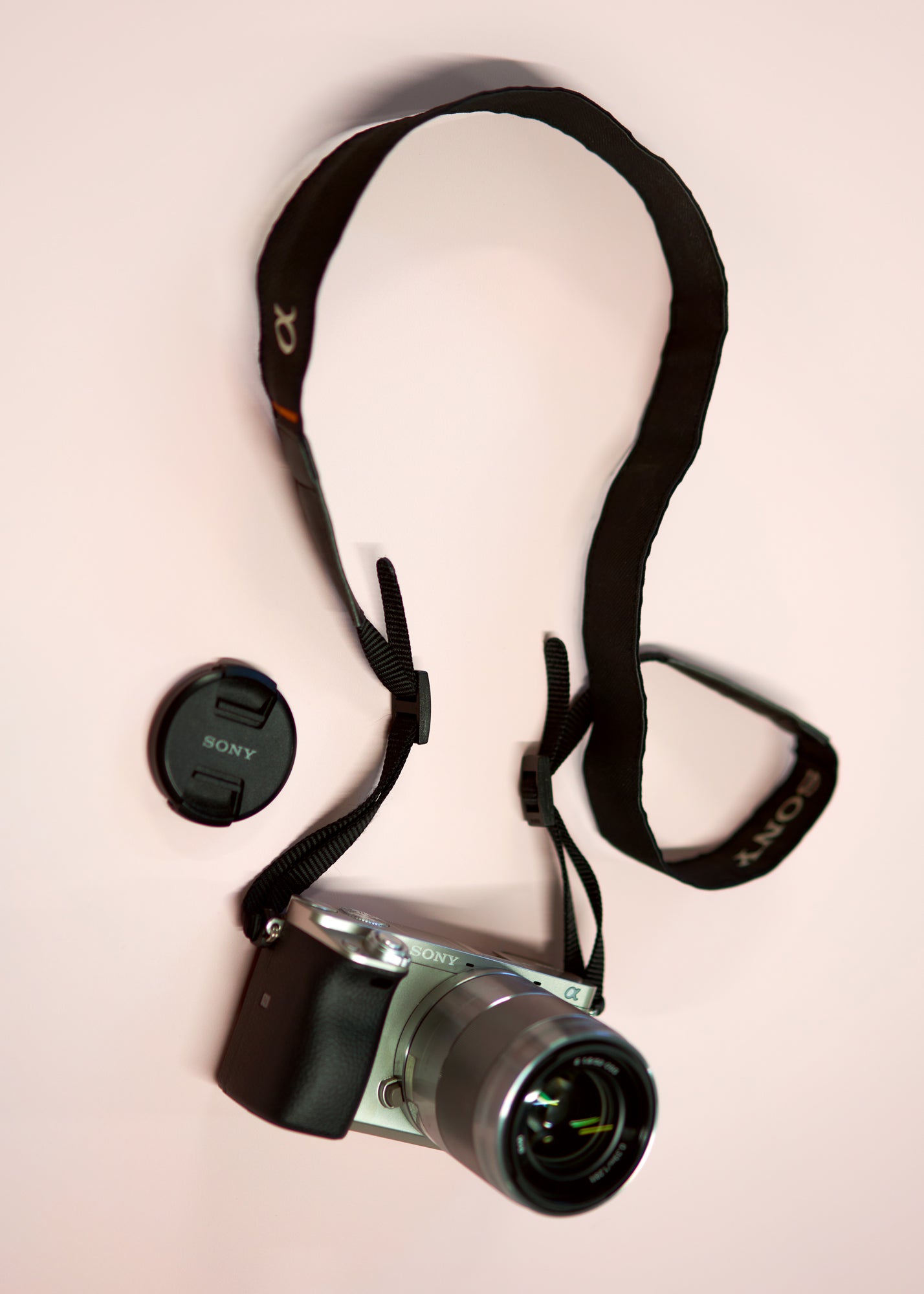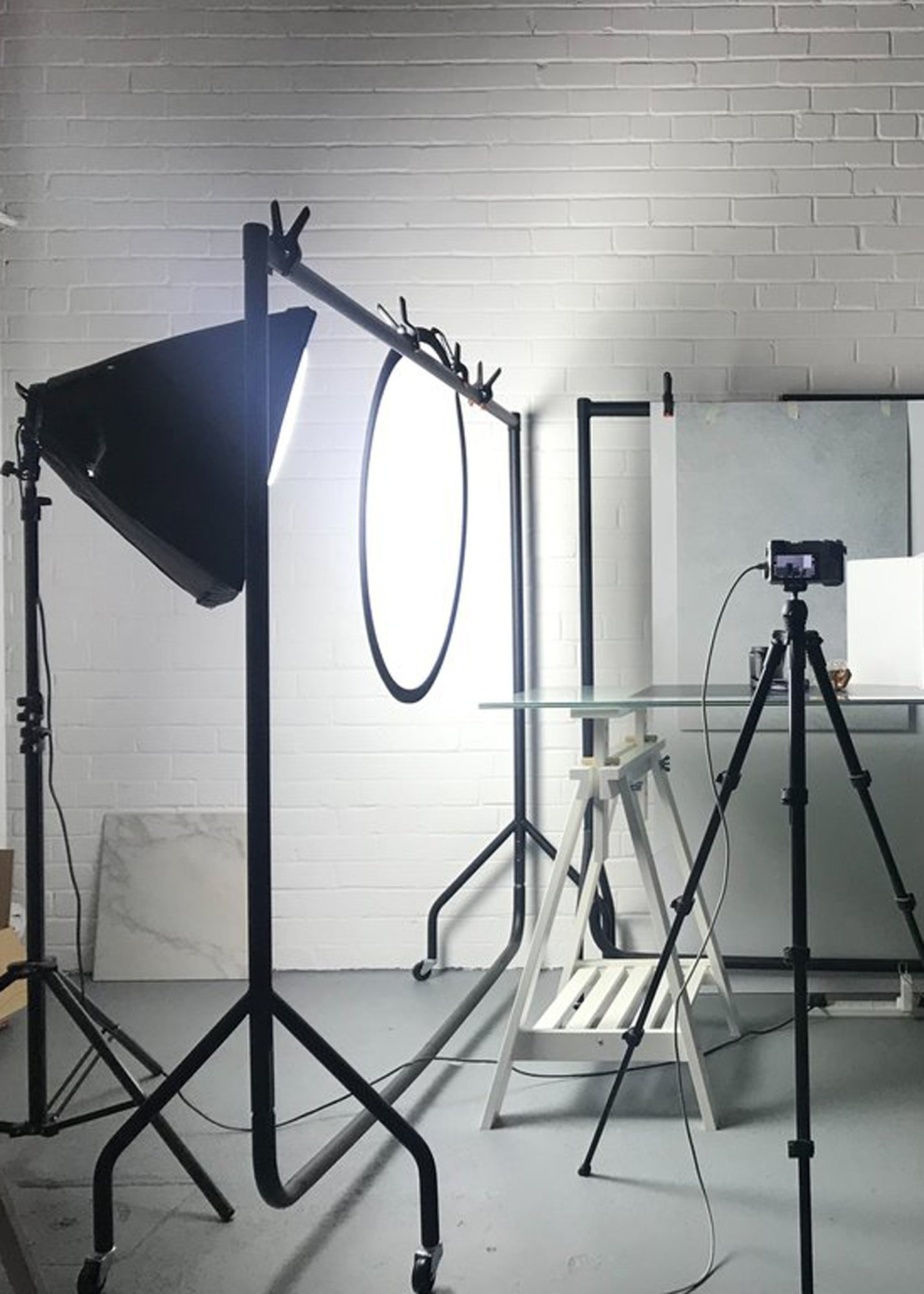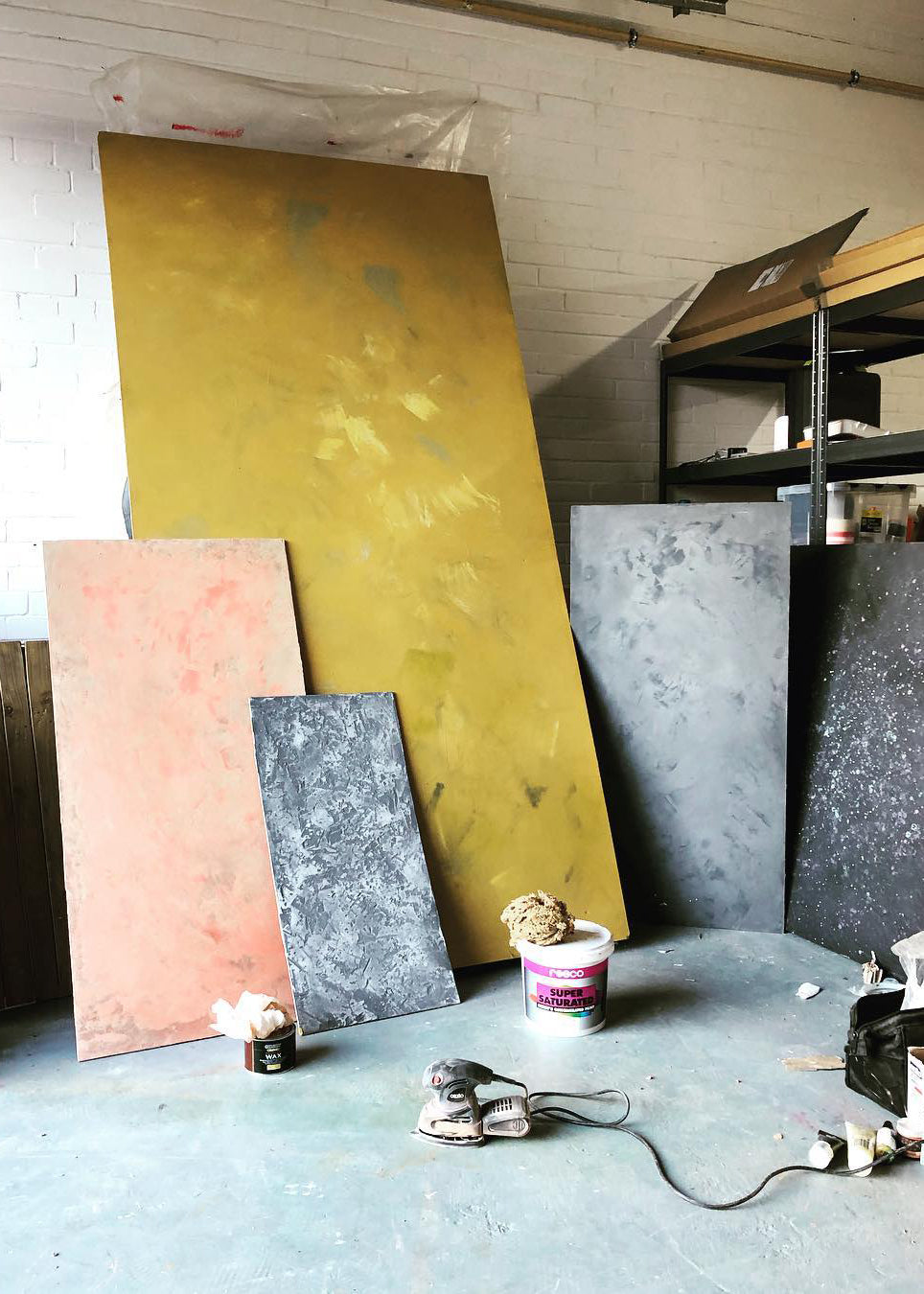Club Backdrops started two years ago, and like any new business, we have been learning and evolving every day. Our kit has adapted along with us, so for this post we will be having a quick rundown of our current photography gear in 2020 - plus a look at how we've changed it up in the course of our journey so far 🙂
At the Beginning
When we shot our first backdrop collections in 2018, we used the nifty little Sony A6000: A compact mirrorless camera with an interchangeable lens system and 24MP sensor. We teamed this with a Sony E 50mm f1.8 OSS lens, choosing a 50mm prime for its versatility and lack of distortion.
For lighting, we picked up a set of 50x70cm daylight balanced constants from Amazon, and accessorised simply with a pair of pop-out diffuser/reflectors.
Here's the A6000 and an early shoot with our constant lights:


This setup worked well for our early photoshoots; The A6000 packs some serious DSLR power into an incredibly light and economically priced body. It performed especially well in atmospheric styled shots thanks to the capacity of the wide aperture lens and manual focus abilities.
In terms of quality, the files we captured with this camera and kit were more than enough for social media and e-commerce use. Aside from a few issues with the flimsy stands on our budget lighting kit, we would still vouch for this setup as a great starting point for product and still life photography.
Our Next Step
In Club Backdrops' first year, the majority of our backdrop textures were sourced from licensed stock. When we made the decision to bring all the backdrop production in-house and invest in our own large format printing equipment, we quickly began to experiment with reproducing original artwork. Right away, we fell in love with the level of detail and realism that comes from owning the entire process - from the sourcing and capture, to the printing and finished product.
We found that our camera and gear would now need to serve a dual purpose: Along with producing photoshoot content and marketing imagery, we would be photographing artwork and found surfaces for high quality reproduction.
So, in early 2019, we upgraded to the Sony A7RIII - a full frame, mirrorless pro camera with a 42.4MP sensor. We paired this again with a standard prime lens, this time the full-frame Sony Zeiss FE 55mm f/1.8 ZA. With this new setup we could capture massive amounts of detail and fulfil our ambition to create 100MP+ textures through the stitching of multiple 42MP RAW images.
Original artwork and textures printing on our large format printer:


With its advanced DSLR capabilities and pin-sharp Zeiss lens, the Sony A7RIII also helped to elevate our photoshoots and social content. It connects perfectly to Capture One software through the studio laptop, and allows us to make the most of incredible tethering features like Live View and dynamic range levels.
As it is still an awesome little camera, we did not let the A6000 go. It is now our ‘satellite camera’, used for behind the scenes shots and research. With its super light and petite body, it's perfectly suited to taking out and about on texture hunting trips!
Club Gear in 2020
Now in 2020, we are getting close to our goal of 100% originally sourced textures. We are also passionate about working with our backdrops, and love to let the new collections inspire our photography and styling ideas.
For greater control and consistency on the lighting side, we made the move at the end of 2019 to a studio flash system. The previous constant softboxes were not really designed for everyday use, and had only 2 power settings. Now we could be far more precise with our lights (and no longer worry about the components melting after a long shoot day 😂). Another profound benefit of flash is the clean, balanced result that it produces. Unlike our fluorescent constants, which could be easily thrown off by any ambient light in a scene, the results of flash stay neutral (even in our tungsten lit workspace).
Right now, the flash system we are using is a pair of Bowens Gemini GM400 monolights, controlled by a 4-Channel Wireless Trigger Kit from Wex. These heads are an older model that we picked up second hand - but, like most pro kit, these babies were made to last, and have functioned perfectly since we started using them.
In terms of accessories, the lights came with a pair of silver/shoot-through umbrellas that we use alongside our trusty pop-out reflectors. We also keep a set of black/silver polyboards in the studio along with plenty of DIY cardboard reflectors and flags.
Here's how we shot our Luxe Collection with the current lighting setup, plus the A7RIII in action:


This simple setup has been working really well for us - but of course we are always on the look out for ways in which we can improve! We’ve had our eye on the new and affordable Bowens Generation X range for a while now, and would love to have an experiment with the range of softboxes and light-shapers on offer.
...But for now it’s “watch this space”! We hope you’ve enjoyed this little peek into our process (and kit bag) to date.
If you are looking for a more extensive list of camera recommendations, do check out this informative post from our new pals at Creative Impact - A collective of amazing individuals who are using their creative talent to positively impact others and the planet. We are happy to be supporting them in their mission to help thousands monthly to grow their business and share stories through their content.
And that's about all for this post. Be sure to check back and we’ll keep you updated with whatever gear the future brings 🙂
'Til next time, Happy Snapping!

